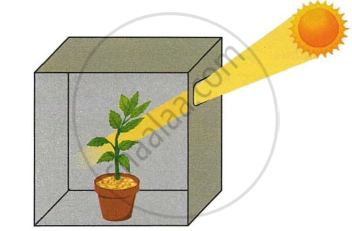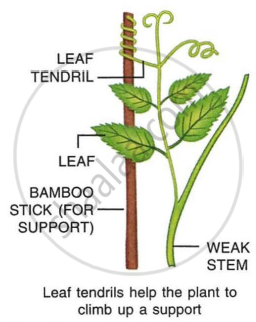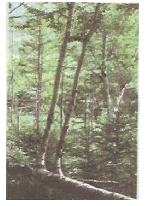Advertisements
Advertisements
प्रश्न
The figure given below depicts a kind of tropic movement in plants. Study the same and answer the following questions:

- What kind of a movement is shown in the figure? Define it.
- How does this movement differ from geotropism?
- Name the stimulus responsible for thigmotropism. Give one example of a plant showing thigmotropism.
- Name one stimulus which gives a positive response for the roots but a negative response for the shoot.
- Draw a neat and labelled diagram of the part of a plant showing leaf tendril. Name the plant.
उत्तर
- Phototropism is shown in the figure.
A plant's bending in a direction of light is a phenomenon known as phototropism. - The response to the stimulus of light is known as phototropism, while geotropism is a response to the stimulus of gravity.
- The stimulus responsible for thymotropism is touch.
Cuscuta and vine tendrils coil around other plants or a support to create a one-sided touch or contact. - Gravity
- Sweet pea plant shows thigmotropism. The labelled diagram showing leaf tendril is given below:

संबंधित प्रश्न
Name the five types of tropisms.
Define chemotropism.

A big tree falls in a forest but its roots are still in contact with the soil.
The branches of this fallen tree grow straight up (vertically). This happens in response to ______.
The growth of a pollen tube towards the ovule caused by a sugary substance as stimulus is an example of :
(a) phototropism
(b) chlorotropism
(c) gravitropism
(d) chemotropism
One of the following is not caused by the growth related movement of the concerned plant part. This is:
When the leaves of a sensitive plant are touched with a finger, they fold up and when light fades at dusk, the petals of a dandelion flower close.
State one way in which the above two processes are similar.
The leaves of the 'chhui-mui' plant begin to fold up and droop in response to a stimulus. Name the stimulus and write the cause for such a rapid movement. Is there any growth involved in the movement?
The instrument which can be used to demonstrate geotropism is ______.
Name the stimulus which causes the following movement in plant:
phototropism
Given below are the figures showing some kinds of tropic movements in plants. Study the same and answer the following questions:

- Which one of these figures is correct? Give reason in support of your answer.
- Name the kinds of movements shown by the root system and shoot system. Define each.
- What are the two stimuli which affect root system and shoot system positively? Name them.
- Which of the following stimuli affects the growth of the root strongly?
- Gravity
- Water
- Draw a neat and labelled diagram of the longitudinal section of a pistil showing chemotropism in an angiospermic plant.
